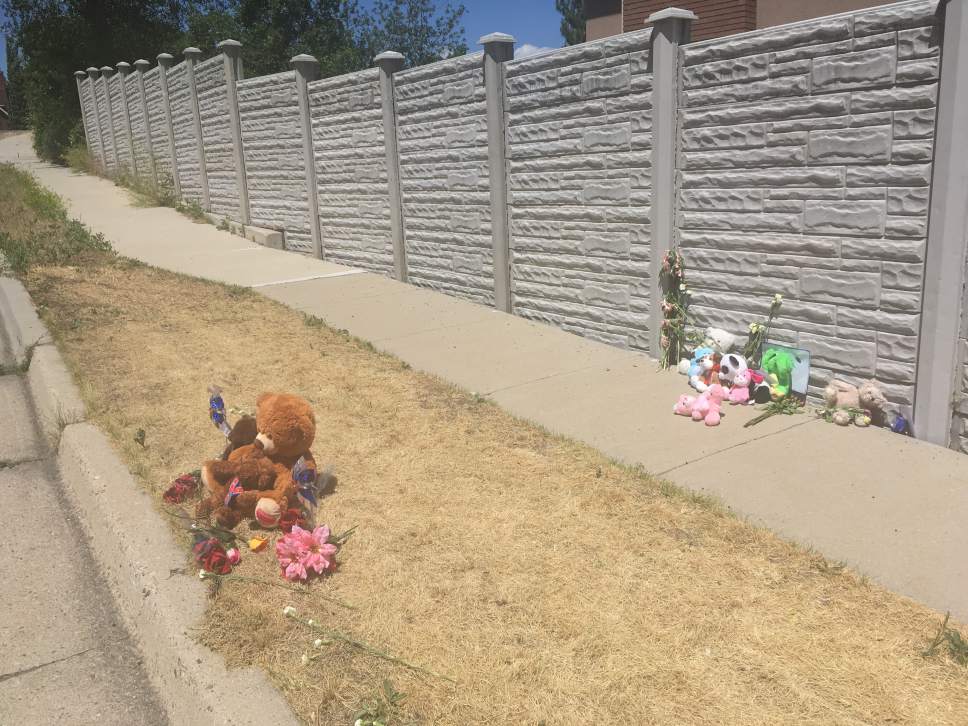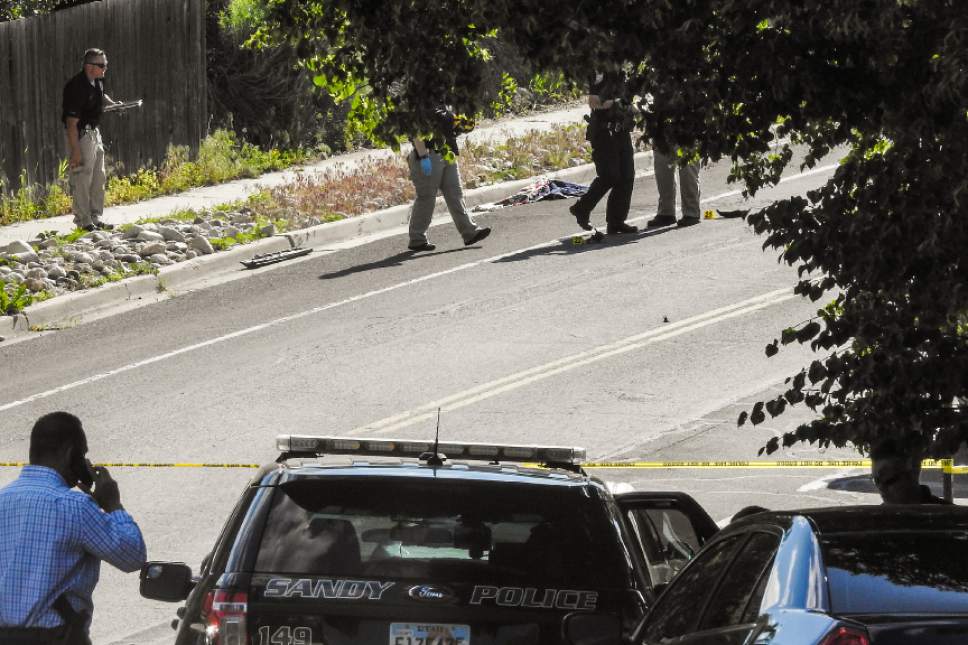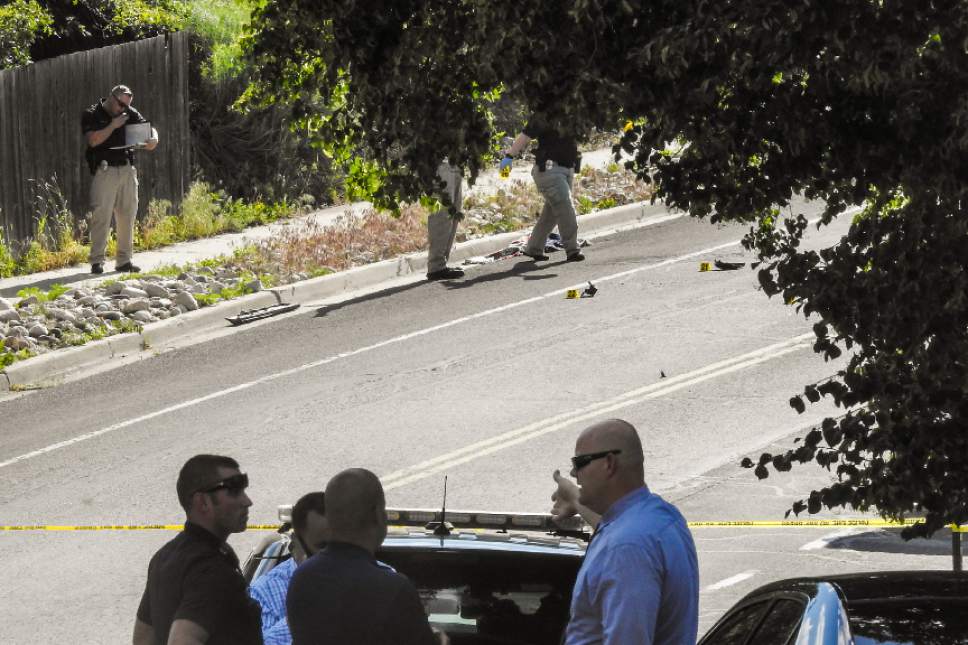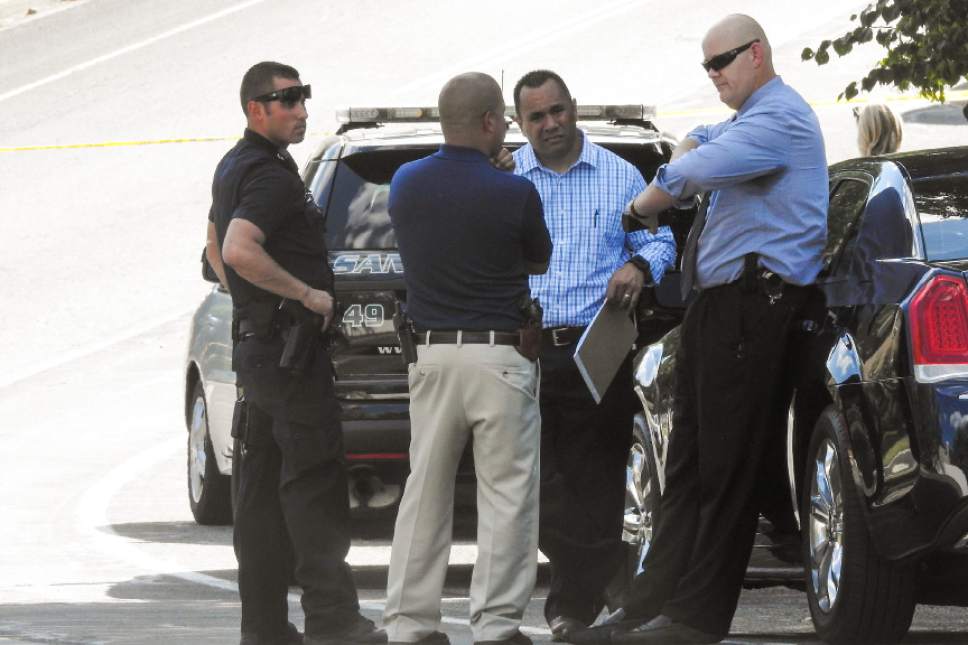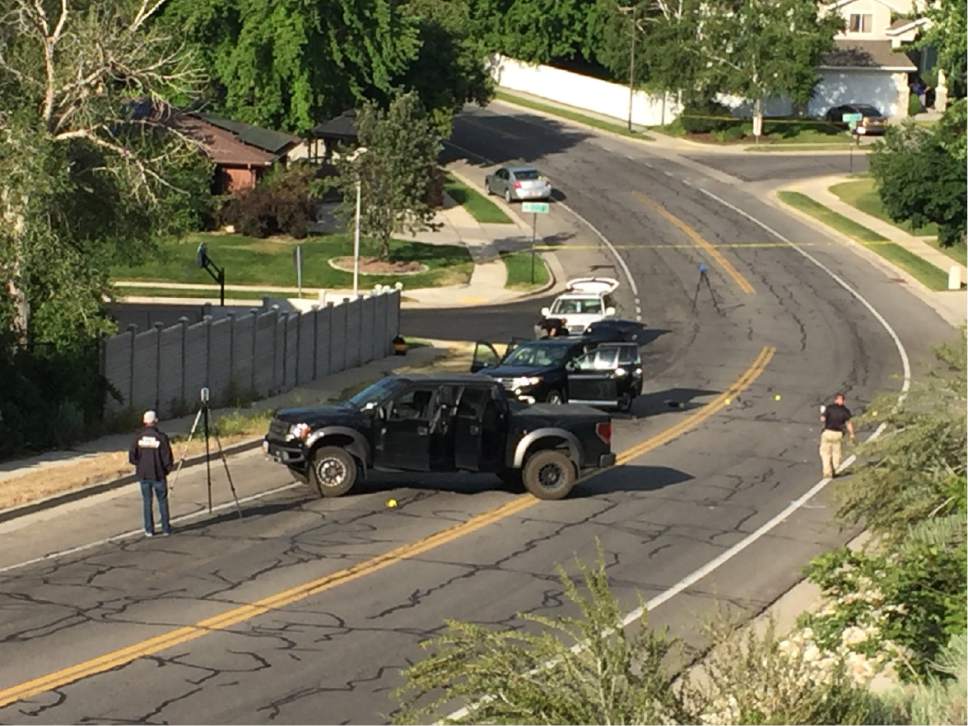This is an archived article that was published on sltrib.com in 2017, and information in the article may be outdated. It is provided only for personal research purposes and may not be reprinted.
Sandy • In the wake of a June 6 shooting on a Sandy street that left three dead and two injured, the city's police chief said Tuesday that while he is happy with his department's domestic violence protocols, they will re-evaluate their policies.
One key issue they'll consider, according to Chief Kevin Thacker: Should officers extend their lethality assessment protocol — now only used to assess risk levels for victims in domestic violence situations — to "intimate partner" relationships, in which the couple isn't married or cohabiting?
Days before she was shot and killed by her ex-boyfriend earlier this month, 39-year-old Memorez Rackley called police about stalking and threats made by Jeremy Patterson. Thacker said his officers talked to Rackley about her options for filing a protective order, advised her to stay at a friend's house and told her an extra patrol would be added to keep an eye on her home. At her request, officers also contacted Patterson, 32, and told him to leave her alone.
But officers never administered an 11-question domestic violence assessment that helps determine how much danger a person is in, and never connected Rackley with a victim advocate. Thacker said that because Rackley and Patterson were not co-habitating, it was not considered a "domestic violence" response.
"This case was unique in that under current Utah law, it is not considered domestic violence," the chief said at a Tuesday news conference. "Although, there are certainly similarities to a domestic incident."
Thacker said his officers provided Rackley with resources and direction "based on her wishes and the information she provided."
Three days later, Patterson shot Rackley, two of her sons and a third child before fatally shooting himself. Rackley and her 6-year-old son, Jase, died at the scene, while her 11-year-old son continues to be hospitalized. An 8-year-old girl was also shot in the leg, but Thacker said she has since been released from the hospital and is recovering at home.
Funeral services, for which the family had requested privacy, were held Tuesday for Memorez Rackley and Jase.
Thacker said he called the news conference to clarify "misinformation" about their protocols for responding to domestic violence. Domestic-violence experts last week were critical of the department, saying the agency has not opted into a Lethality Assessment Protocol (LAP) used by 44 of the state's law enforcement agencies. Thacker said they use a nearly identical program which they developed in 2010, adding that they have four in-house victim advocates they use when needed.
But Jenn Oxborrow, the Utah Domestic Violence Coalition's executive director, said Tuesday that there are a few key differences between Sandy's protocol and the standardized LAP response used elsewhere in the state. The LAP questionnaire is used in intimate partner violence situations — not just with cohabitants, according to Oxborrow.
The statewide program also connects victims to a network of resources beyond what a police department can provide, Oxborrow said, adding that advocates can arrange childcare, attend court hearings or help work out a safety plan.
"They're missing out on a whole package of resources and sending people to a motel," Oxborrow said.
Sandy police said Tuesday that on the day Rackley was killed, she had started filling out the paperwork to obtain a protective order against Patterson. It was never completed or filed with the court.
But Thacker said he is not sure getting a protective order would have changed the tragic outcome.
"This was a man who was very set on doing this," he said of Patterson. "… He was set to do this and I don' t know if anything could have stopped him, aside from having someone with her all the time."
Thacker also confirmed Tuesday that Patterson's family knew of threats he was making to kill someone, and they never contacted police. But an anonymous tipster told a Draper police officer hours before the shooting that she had received a message from Patterson saying that he had broken up with his girlfriend — and that he wanted to kill her and then himself.
Current state law defines domestic violence as crimes involving people who are related, who are or were married to one another, who are or were living in the same home, or who have children together.
The state's definition excludes parent-child relationships. Thacker said that in the wake of this shooting, a working group will be formed with Utah's police and lawmakers to discuss whether the state's law needs to be changed or updated.
Ned Searle, the director of the Utah Office on Domestic and Sexual Violence, voiced his support for changing state law on Tuesday, saying the state's stalking code and other laws may be out of date.
"I think we can definitely improve the language for intimate partners," Searle said, "and help provide law enforcement with better tools."
Oxborrow said any changes to state law should be done carefully and based on research, not anecdotal evidence. But even if the laws aren't changed, Oxborrow said police can still assess risk for victims, regardless of whether they meet the law's definition of "domestic violence."
"You don't need the law to screen for risk," she said. "So there's a missed opportunity here."
The shooting occurred shortly after Rackley had picked up her sons at Brookwood Elementary School. Police say Patterson rammed the SUV in which Rackley and her children were riding, and then opened fired in the middle of the street. The driver of the SUV — and the mother of the 8-year-old girl who was injured in the shooting — had offered the Rackleys a ride that day, according to police.
Sandy police are still investigating the shooting, according to Thacker, and are planning to conduct several more interviews.
"There's a few questions we're trying to answer," the chief said. "I don't know if we ever will get some of those answers."






